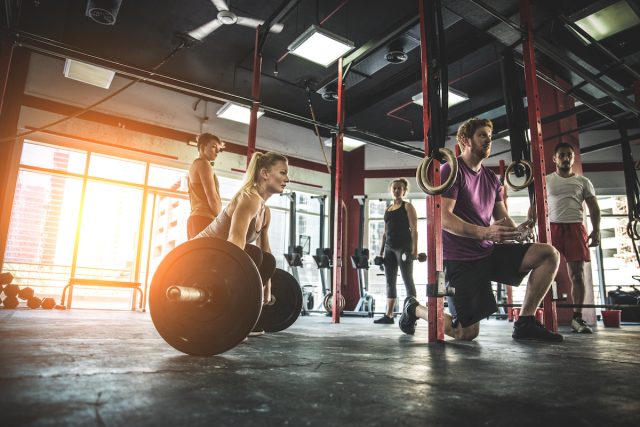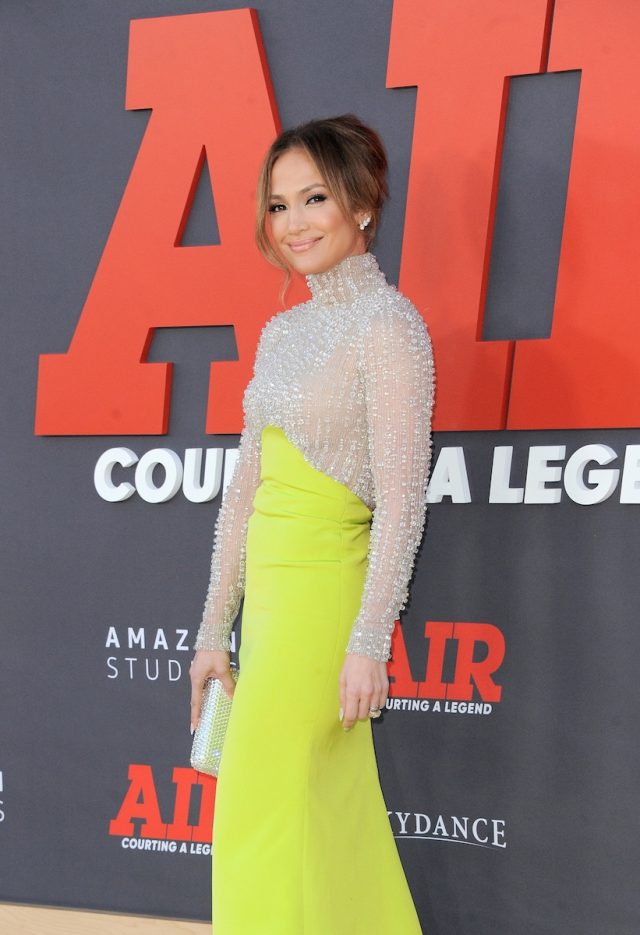Jennifer Lopez is 54 and in the best shape of her life—which is not an accident or a coincidence. The singer/actress/dancer works incredibly hard to stay fit and focused, something she is open about (no, it’s not just genetics). “Very rarely will I skip my workout,” Lopez once told US Weekly. “Sometimes, I work too late the night before, and I’m like, ‘Ugh, I can’t do this.’ But I tell myself, ‘Just do it. It’s only an hour.’ It’s just talking yourself off the ledge of being a lazy bum.” Here’s how she does it.
Lopez does dance-based workouts with celebrity trainer Tracy Anderson. “It’s no secret that I love dancing, so it doesn’t even feel like exercise to me,” Lopez tells People. “I freestyle dance with Tracy Anderson five times a week. We’ll incorporate light weights (3 lbs/ 1.4 kgs) for the arms and moves that focus on the butt and thighs and engage the core. I also do circuit training with David Kirsch when I’m in New York. We do hour-long circuits at least three times a week. It’s full-body training — so planks, pushups, boxing — really everything. It’s all about changing it up and keeping your body guessing.”
Lopez needs stamina for her incredible live performances and shows, which is where circuit training is very useful. “Circuit training is a form of body conditioning that combines endurance training, strength training, and high intensity aerobics,” Jacqueline Kaminski, MS, RDN/LDN says in an article for the National Academy of Sports Medicine. “It typically involves several different exercises that target various muscle groups, and each exercise has a target rep range or time cap in which the exercise must be completed.”
Lopez does planks, pushups, boxing as part of her circuit training—other moves include jumping squats, lunges, later skaters and many more, some with weights. “Regardless of whether you do lunges or squats, you have to remember to engage your core,” Mumbai-based fitness coach Bhavna Harchandrai tells Vogue India. “They help work on your quads and glutes, and create engagement from the core of the body, making them perfect for a full lower body exercise.”

As with any new exercise, beginners should start slowly and work their way up. “Circuits can be completed in various time frames and evoke great health and fitness benefits regardless of the time devoted to it,” Kaminski says in her National Academy of Sports Medicine article. “Circuits can last between 15-60 minutes, and due to the high intensity structure, you’ll feel like you get a great workout regardless of how much time you must commit. Don’t believe it? Several studies have shown that individuals have seen major improvements in their fitness status with circuit durations of as little as 7 minutes.”


Writer Emily Tannenbaum tried Lopez’s workout for a month, detailing her experience in an article for Women’s Health. Tannenbaum says while doing grueling workouts every day indefinitely is not sustainable, she developed habits that will help her long-term when it comes to fitness. “The real victory was psychological. During the 28 days, my closest friends and family told me I seemed happier and more talkative. With each new achievement, like an additional push-up or upgrading from a 10-pound dumbbell to 15-pounders, I felt more excited to keep up the hard work.”
